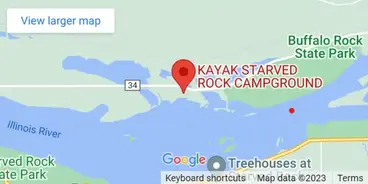What to Wear Kayaking
One of the first rules of kayaking in any temperature is don’t wear cotton. Cotton takes 3 times as long to dry as a technical layer fabric does. Jeans or cotton tshirts are the last type of clothing that you should wear for your journey. Cotton clothing is also super heavy when it’s wet, which makes it harder to swim to safety. You’ll definitely want to dress for the water temperature and not the air temperature and here are some reasons why
Hear are some pointers on what to wear kayaking, following these general guidelines can help keep you out of harms way
Always wear a personal flotation device (PFD) when you are out on the water kayaking at all times. This is rule number one and one of the most important steps you can take. Your chances of survival in the water increase dramatically when you have a PFD on.
Dress for the water temperature, not the air temperature; this may mean wearing a wetsuit or dry suit depending on the combination of the air and water temperature
Dress in layers, especially on top. There is common rule about kayaking that takes into account the combination of air and water temperatures.
It is called the 120 rule. It’s a rule paddlers use to decide when it’s safe to paddle without wearing some form of immersion wear like a dry suit or wetsuit. Basically, you add the water and air temperatures together, and when the combined total is greater than 120° F, then it’s safe to paddle without immersion wear.
Dress for sun protection. Regardless of cloud cover, a day on the water is a day of magnified sun exposure. So wearing clothing with UPF fabrics is a smart choice (plus sunscreen for incident rays of UV radiation).
Avoid cotton in all layers, because it absorbs water and stays wet; seek quick-drying fabrics instead. For any clothing layer that touches your skin, go with wicking, quick-drying nylon or polyester (or another synthetic fabric).
Wear clothes that allow for greater range of motion and will be comfortable for long periods of sitting.
Abrasion resistant fabrics are more rugged and can stand up to the elements and encounters with sand, water and any rough materials of your kayak.
Avoid metals within zippers, fasteners and hardware that could rust Water, particularly salt water, corrodes many metals, so rugged plastics are a good alternative.
Dressing for Kayaking in Mild Conditions
a kayaker on the beach, getting ready to set out on the water on a warm day
Underwear: If paddling in warm conditions for shorter outings, many people choose to wear a swimsuit as a first layer. Just keep in mind the general guidelines above to make sure you’ll be comfortable for the duration of your trip. Otherwise, choose noncotton sports bras and underwear suitable for outdoor pursuits.
Tops: Rashguards, which are made of polyester or nylon blended with Lycra® spandex, are well-suited to paddling and other water sports because they’re quick drying, stretch well and have high UPF ratings to protect against damage from UV rays. Their formfitting design and flat-seam construction make them comfortable, too, when layered under other clothing or a wetsuit. Your favorite synthetic or wool base layer can work fine as well.
Water shirts: Most of these tops also offer UPF protection, but differ from rashguards by having a looser fit. If you don’t plan to swim in them, they’re a good option.
Bottoms: You can wear comfortable and quick-to-drying items on your bottom half; board shorts or comfortable quick-dry pants are good options. Avoid those that bind or chafe. Superthin fabrics, like in some synthetic yoga pants, are not a great idea because they aren’t made to stand up to constantly shifting in your seat as you paddle.
Mid-layer: If conditions don’t require either a wetsuit or a dry suit, then bringing along a fleece jacket or other warm, synthetic mid layer makes sense.
Outer layer: If you expect any exposure to significant rain or wind, choose a quality waterproof/breathable jacket and rain pants. Paddling jackets are nice because they have gaskets at the wrists and neck to ensure the water stays out; they’re especially nice for keeping out the drips that run down your paddle shaft. If you’re going on a short outing and don’t expect significant rain, a breathable/water-resistant jacket can work just fine.
Footwear: Neoprene paddling booties are ideal because they’re lightweight, water-ready and protect toes and the bottoms of feet. Any footwear that does the same will work fine. Water sandals, though, will be less protective than booties and can collect gravel, sand and muck underfoot during put-ins and takeouts. Avoid anything without a back strap, like flip-flops, because they come off your feet too easily.
For colder conditions and where rain or wave splash are likely, you can also get waterproof socks or waterproof paddling booties. Another option is to wear thick noncotton socks inside your booties for added warmth.
Hats: Look for hats with wide brims or capes. Consider a cap leash, too, if you don’t have a chin strap or other reliable way to secure your hat. In cold conditions, you also need a beanie for warmth—it should fit snugly under or over your other hat.
Gloves: Paddling gloves are great because they protect against both blisters and blustery days. “Pogies” are another cool-day option: They fasten to the paddle and you slip your hands inside them to grip the shaft. Some people prefer them because pogies let their hands directly grip the paddle while also being shielded from the elements.
Glasses retainers: Few sights are sadder than a pricey pair of sunglasses sinking to the bottom of the river. Your retainer needs to float (check it at home) and always be attached. (It’s a good idea to bring a spare retainer, too.)
PFDs: There’s a reason kayak rental shops require you to wear a personal flotation device (PFD), even if you only plan to paddle close to shore. Those close-in waters are where most drowning accidents happen, but they rarely happen to a paddler wearing a PFD. Even cool water feels shocking when one capsizes—a PFD provides core body warmth and keeps you afloat without having to rely solely on swimming ability. So don’t journey out kayaking until you put on a properly secured PFD. For sizing and fitting advice (snugger is better
Clothing Checklist
The combination of wind, air temps and H2O temps can make choosing the right clothing a challenge. What we are offering are recommendations for when you paddle with us as a guide service. This takes into account MINIMUM H2O exposure and quick rescue. There are many options and combinations to achieve the appropriate clothing requirements.
| Season | Air Temps | Water Temps |
| Spring | 40° to 60° | 38° to 59° |
| Summer | 61° to 90°+ | 60° to 90° |
| Fall | 35° to 65° | 48° to 65° |
| Winter | < 50° | < 45° |
H2O Temps 38 to 45
- Dry Suit
- Layers:
- Synthetic, insulating against skin or base layer including socks.
- Synthetic, more insulating mid layer.
- Synthetic, insulating socks.
- Head gear: hat, balaclava…etc.
- Hand wear: Winter paddling gloves and or Poggies.
- Footwear: Neoprene paddling shoes or booties or a solid pair of old sneakers.
H2O Temps 46 to 59
Drysuits are optimal, but a 3 MM wetsuit (Farmer John/Jane) with fleece/synthetic layers and dry top is a good second choice.
*You may substitute a waterproof/ breathable paddle top for dry top with the appropriate amount of layers.
**High air temps may allow for a s/s paddle top with wetsuit.
H2O Temps 60 to 65
Air temps will help make the best decision.
*Rain and wind with cool air temps may call for wetsuit and paddle top.
**High air temps and sun may be just shorts and s/s top.
***These temps are not terribly dangerous, but you must weigh all variables: air temp, wind, weather, water temp, length of paddle and personal heat index.
60 degree H2O Temp
Marks when we can start to wear clothes that reflect air temps as opposed to water temps.
H2O Temps 66+
Finally warm weather! Shorts, swim trunks, s/s top, bikini.
*We are looking for sun protection and synthetics to cool the body during physical activities.
** Cotton is not our friend during watersport activities. It does not dry well and disapates body heat quickly. NO COTTON!! Cotton is Good for fashion, bad for performance. This means t-shirts, jeans, pants and shorts are not appropriate kayaking gear.
CANOE/KAYAK BASIC INSTRUCTIONS
Fasten gear into the boat, and always plan for the possibility of capsizing and getting wet.
Know that the steering is done from the stern (back) and the bow (front) paddler provides power.
Know that normal stern strokes on the right will turn the boat left, and vice-versa.
Look far ahead, and move the canoe to the proper river position long before passing an obstacle.
Keep maneuvering room between your boat and others.
If in doubt about paddling safely past an obstacle, go to shore and portage around it.
Know where your trip ends, and some landmarks along the way.
HOW TO RIGHT A CAPSIZED CANOE
If you swamp your canoe, first make sure all canoeists are safe. Then make sure you do not lose the canoe or paddles -since they are your means of return. Last, recover other gear.
A canoe full of water weighs more than a car, but will still float. Maneuver the boat to shallow water. Never get it into water immediately upstream of an obstacle. You must roll the flooded canoe onto its side in shallow water, then slowly lift to allow water to run out. When enough water is out, try to pull the boat onto the shore. Once completely emptied by turning the canoe upside down on land, put the canoe back into the river, load up your gear, and continue down the river.
HOW TO GET HELP
Always honestly evaluate your river skills before beginning a trip. If you have started and you find the conditions become more than you wish to handle, paddle or float to the nearest river-access point, get yourself and your gear well out of the river, and get help.
If you do get into a hazardous river situation that you are unable to solve by yourself, each kayak / canoe has our name and phone number attached to it. For non emergency call us. For emergency dial 911. If you have no phone, notify any passing boater to let us know of your situation.
RESPECT NATURE Kayak basic instruction
We encourage you to stop at sandbars to have a picnic lunch, to trade places in the canoe, or just to take a break from paddling. If you do make such stops along this federally protected riverway, make sure you take nothing but pictures and leave nothing but footprints.
Kayak rental
Boating Safety and Rental Rules
- Daily rates are per kayak. Single Kayaks carry 1 person. Tandem Kayaks carry 2-3(2 adults 1 child<70lbs or 1 adult and 2 children)
- Rental includes kayak, life vest and paddles, land based kayak lesson, safety briefing
- All kayaks must be returned back to the rental location by or before 5:30 pm
- We cannot provide rental or livery services anytime unsafe conditions exist on the rivers, forests or roads.
- We reserve the right to refuse service to anyone who appears to be under the influence of drugs or alcohol.
- If you need to cancel for any reason please contact us 24 hours in advance of your reservation and we will hold a credit on file for you until next year 10-1-23.
- Be aware of weather and traffic
- If by chance, thunderstorms arise, paddle to shore, and get out of your kayak,
- Personal Flotation Devices (PFD’s or life jackets) must be worn, ZIPPED UP, at ALL TIMES while in your kayak NO EXCEPTIONS!
- All Kids under age 13 must be in a tandem kayak and with an adult present and on the water with them at all times
- Anyone under the age of 18years old may not rent a kayak without an adult present and on the water with them at all times. If you are 13-18 years old and are athletic you may paddle in a single kayak with us on one of our GUIDED KAYAK TOURS
- PLEASE BRING A HAT, SUNSCREEN, BUG SPRAY, and PLENTY OF WATER WITH YOU
- Please carry your cell phone in a waterproof bag(we are not responsible for damage to your personal items).
- Do NOT PADDLE DOWN THE MIDDLE OF THE ILLINOIS RIVER
- Stay close to the shore(We have a 50 yard wide paddling lane between the buoys and the shore(this makes it much safer than riding your bike down the street (the view is better anyway). Do not cross the river in front of any boat!
- Swimming from kayaks is prohibited
- Capsizing of kayaks is not permitted
- Renters may NOT cross the river or paddle near the shipping lane.
- Alcohol / drugs is not permitted in any rented boats.
-
Kayak Rentals Regulations
- we have life jackets for all ages including infants(<30, toddlers(30-50lbs, youth(50-90lbs), adult(>90lbs
- Dogs are only allowed in kayak rentals at our Kayak Starved Rock Campground location only
- FOOTWEAR MUST BE WORN AT ALL TIMES! no flip flops
- For Kayak rentals Must be 13 years of age or older to operate a 1 person kayak and have previously taken kayak lessons
- Participants 13 – 17 using a 1 person kayak must have had previous kayaking experience in order to paddle a single kayak and must be accompanied by a parent or guardian 21 years of age or older in another kayak.
- Participants under the age of 18, must have a parent/guardian 18+ sign the liability waiver.
- There is a 275 lb. maximum weight limit for single kayaks, if over 225 you may paddle a tandem kayak solo(we can shift the seat to the middle) 550lb limit for double kayaks.
GUIDED KAYAK TOUR RULES FOR KIDS
- If you are 13 years old or older and are athletic you may paddle in a single kayak with us on one of our GUIDED KAYAK TOURS. An adult must sign a waiver.
Check the website below to see current conditions.
CLICK HERE TO SEE Illinois River Flow Graph
Payment for damages due to abuse or failure to obey the rules may include,
in addition to repair costs, compensation for lost rental income and staff time expenses.
WE ARE NOT RESPONSIBLE FOR DAMAGE OR THEFT OF PERSONAL BELONGINGS
.
[/vc_column_text][/vc_column][/vc_row]
CANOE/KAYAK BASIC INSTRUCTIONS
Fasten gear into the boat, and always plan for the possibility of capsizing and getting wet.
Know that the steering is done from the stern (back) and the bow (front) paddler provides power.
Know that normal stern strokes on the right will turn the boat left, and vice-versa.
Look far ahead, and move the canoe to the proper river position long before passing an obstacle.
Keep maneuvering room between your boat and others.
If in doubt about paddling safely past an obstacle, go to shore and portage around it.
Know where your trip ends, and some landmarks along the way.
HOW TO RIGHT A CAPSIZED CANOE
If you swamp your canoe, first make sure all canoeists are safe. Then make sure you do not lose the canoe or paddles -since they are your means of return. Last, recover other gear.
A canoe full of water weighs more than a car, but will still float. Maneuver the boat to shallow water. Never get it into water immediately upstream of an obstacle. You must roll the flooded canoe onto its side in shallow water, then slowly lift to allow water to run out. When enough water is out, try to pull the boat onto the shore. Once completely emptied by turning the canoe upside down on land, put the canoe back into the river, load up your gear, and continue down the river.
HOW TO GET HELP
Always honestly evaluate your river skills before beginning a trip. If you have started and you find the conditions become more than you wish to handle, paddle or float to the nearest river-access point, get yourself and your gear well out of the river, and get help.
If you do get into a hazardous river situation that you are unable to solve by yourself, each canoe has our name and phone number attached to it. If you can access a phone in the event of an emergency, call KayakMorris.com first. further instructions and contact the appropriate emergency services for you. If you have no phone, notify any passing boater to let us know of your situation.
RESPECT NATURE
We encourage you to stop at sandbars to have a picnic lunch, to trade places in the canoe, or just to take a break from paddling. If you do make such stops along this federally protected riverway, make sure you take nothing but pictures and leave nothing but footprints.




